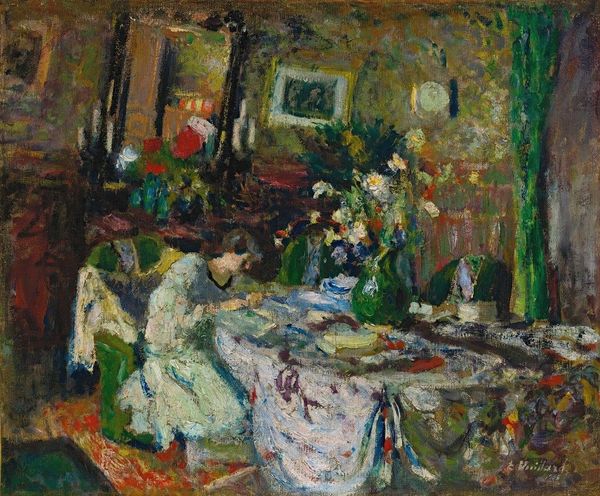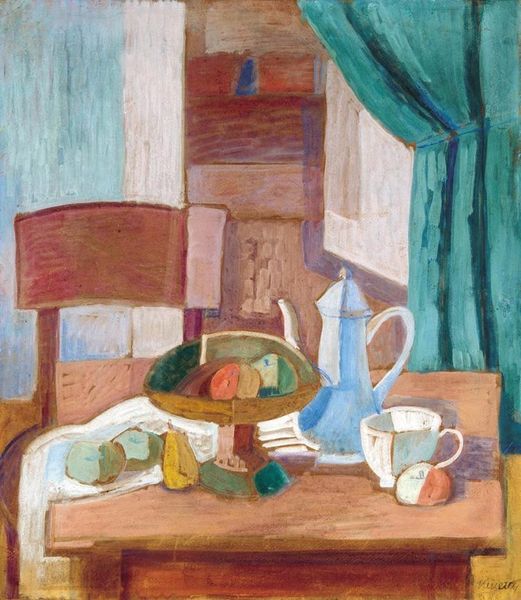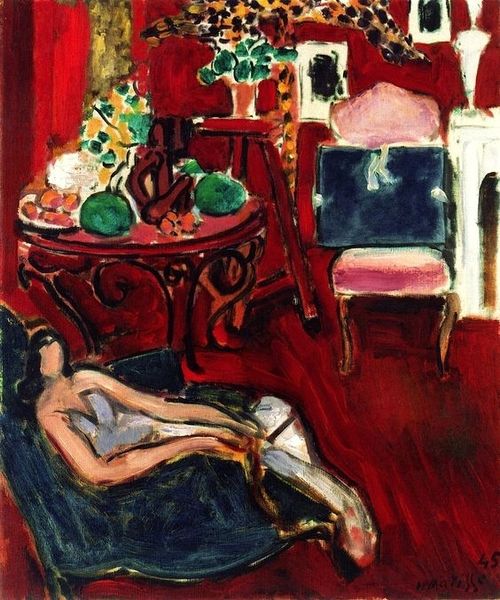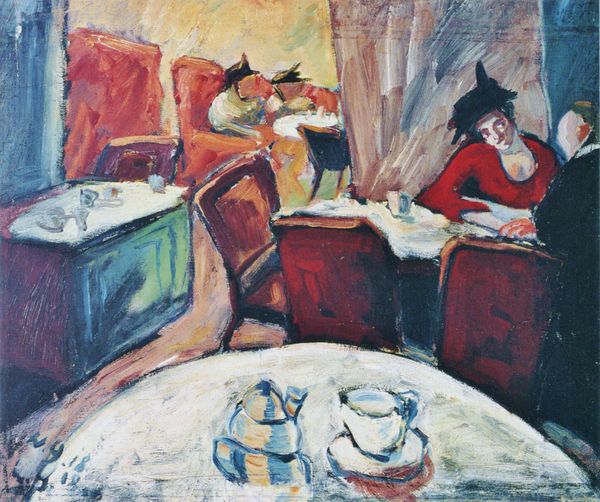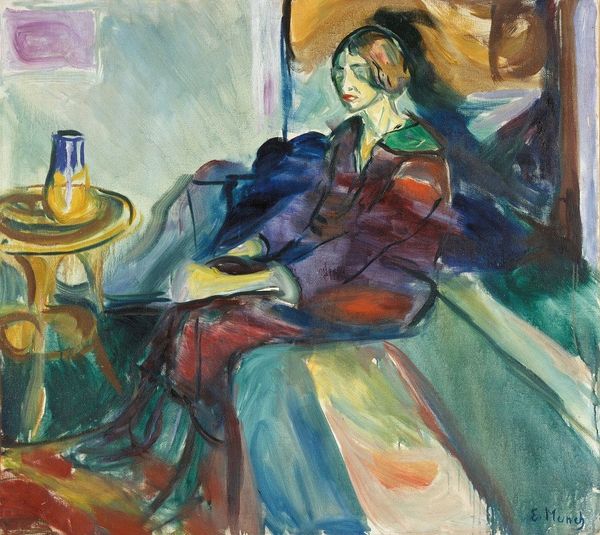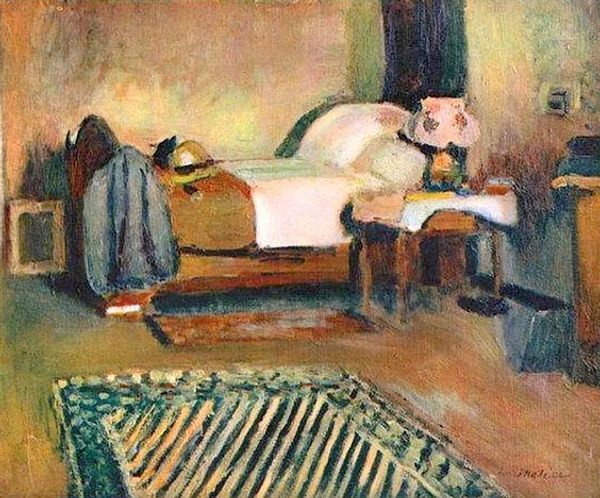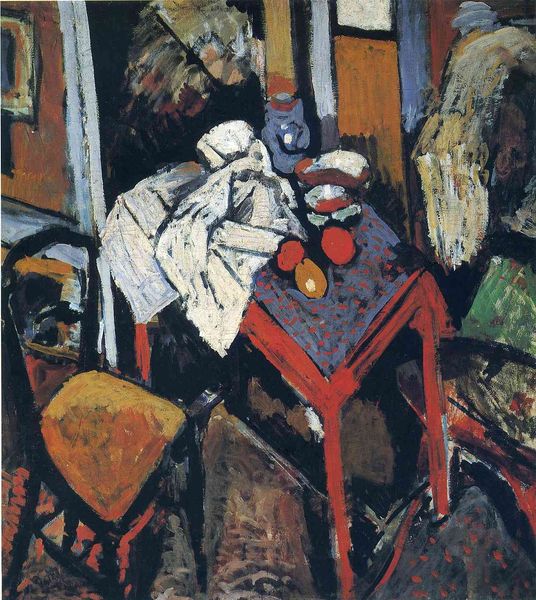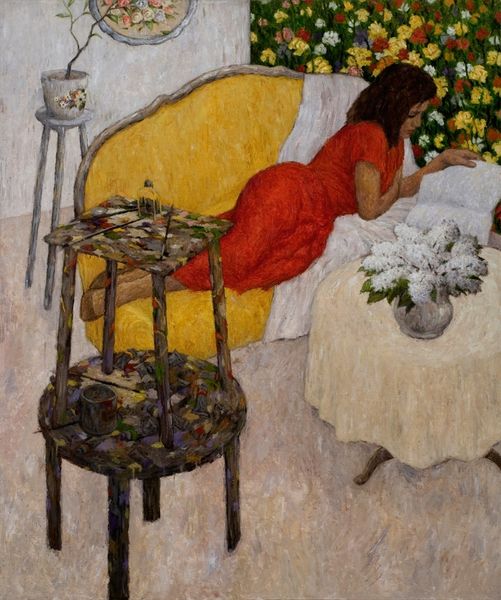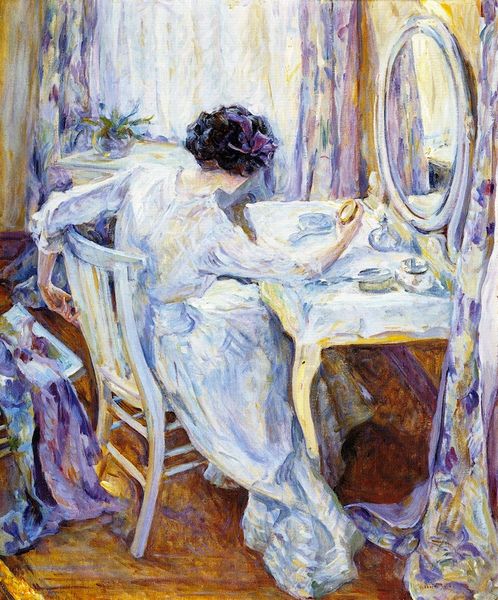
Copyright: Public domain US
Editor: Here we have Henri Matisse's "The Invalid" from 1899, rendered in oil paint. The brushstrokes are thick, almost sculptural. There's a real sense of stillness, but also, maybe, of isolation. What do you see in this piece, considering the social context of the time? Curator: That's a perceptive observation. Consider the historical moment: the late 19th century, a period marked by shifting social structures, anxieties about health, and evolving roles for women, who were often confined to domestic spaces. What narratives does Matisse seem to engage with through his representation of illness? Is this simply a portrayal of personal suffering, or something more? Editor: Perhaps there's a comment on the constraints placed on women, their lives often limited by health concerns and societal expectations. The darkness surrounding her contrasts with the light on the table. Could that juxtaposition be deliberate? Curator: Precisely! The table, laden yet undefined, might represent a space of possibility, yet it's confined within the larger picture of the woman's physical confinement. Matisse is using color and composition to comment on the domestic sphere as both a site of nurturing and of constraint. It’s also important to consider whose voices were missing in these historical narratives; the lived realities of women outside of the upper classes would’ve been vastly different. How does this painting make you consider absent voices? Editor: It definitely prompts me to think about whose experiences aren't represented, and how class and social standing would impact health and access to care. Curator: And understanding those absences helps us build a more complete, and critical, view of art history. Editor: This really reframes how I see not only this painting, but portraiture of this period. I’m appreciating the subtleties of impasto technique so much more.
Comments
No comments
Be the first to comment and join the conversation on the ultimate creative platform.

